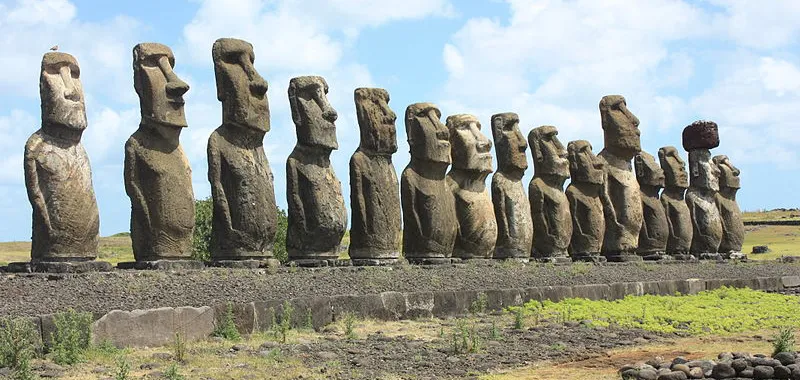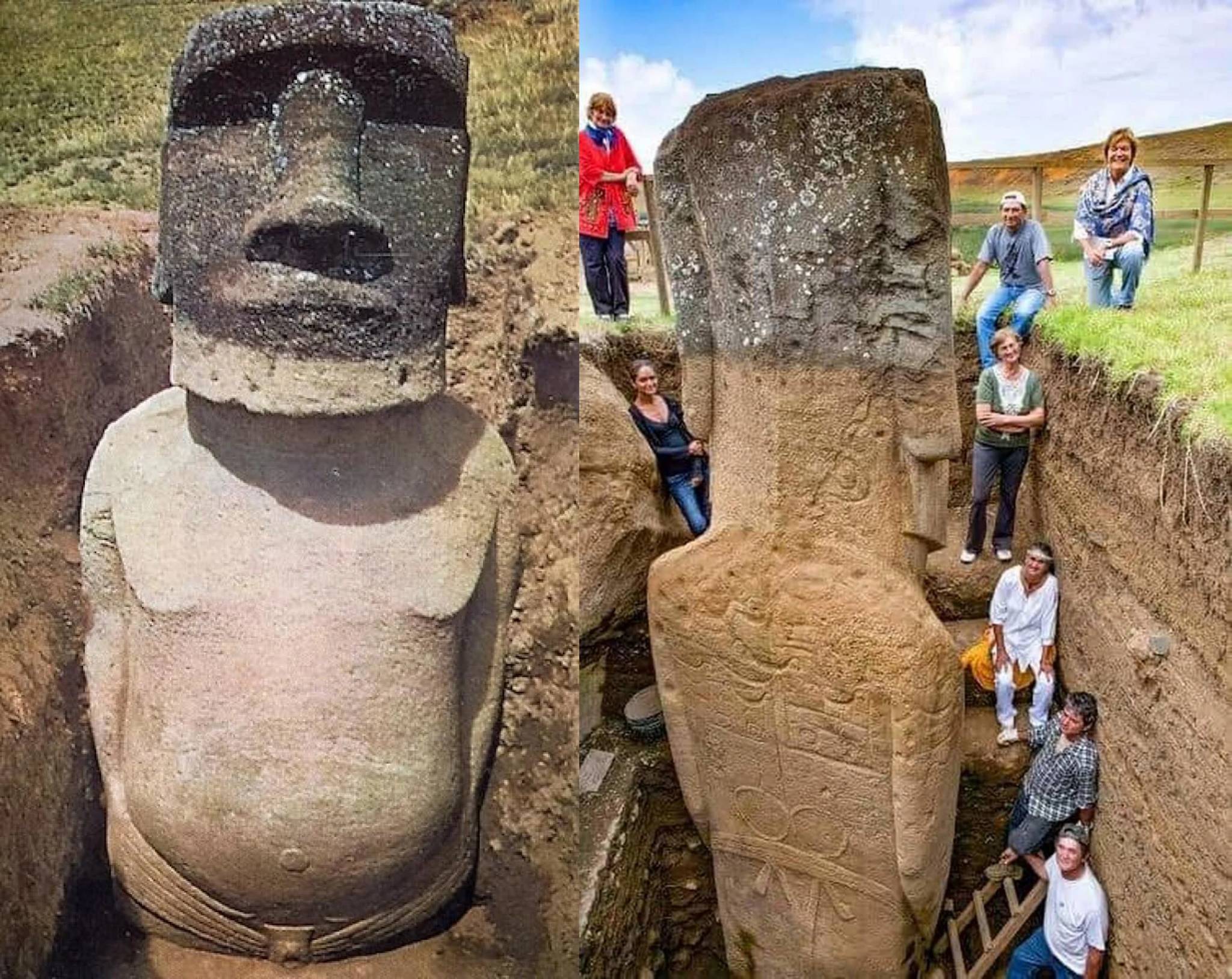A new Moai statue was discovered on Easter Island, a remote volcanic island that is a special territory of Chile, earlier this week.
The stone-carved statues were created by a native Polynesian tribe more than 500 years ago. The newly found one was discovered in a dry lake bed on the island, according to the vice president of Ma’u Henua, Salvador Atan Hito. ABC News first reported the find.
Ma’u Henua is the Indigenous organization that oversees the island’s national park. The discovery was said to be important for the native Rapa Nui community.

There are nearly 1,000 Moai made of volcanic tuff on Easter Island. The tallest of them is 33 feet. On average, they weigh between 3 to 5 tons, but the heaviest ones can weigh up to 80.
“The Moai statue is important because they really represent the history of the Rapa Nui people,” Terry Hunt, professor of archaeology at the University of Arizona, told ABC. “They were the islanders’ deified ancestors. They’re iconic worldwide, and they really represent the fantastic archaeological heritage of this island.”

While the newly uncovered statue is smaller than others, its discovery marks the first in a dry lake bed.
The find came as a result of changes in the area’s climate—the lake surrounding this sculpture had dried out. If dry conditions persist, it is possible that more currently unknown Moai could appear.
“They’ve been hidden by the tall reeds that grow in the lake bed, and prospecting with something that can detect what’s under the ground surface may tell us that there are in fact more moai in the lakebed sediments,” Hunt said. “When there’s one moai in the lake, there’s probably more.”
The team is also searching for tools used to carve the Moai statues and various writings.
The UNESCO-protected World Heritage Site is the most remote island in the world. The Moai statues, in particular, are a major draw for tourists.
Last year, the island saw a volcanic eruption that damaged the statues—a catastrophic event that saw more than 247 square miles of land on the island razed.
 Star today | Model | Singer | Artist | Star | Showbiz
Star today | Model | Singer | Artist | Star | Showbiz
